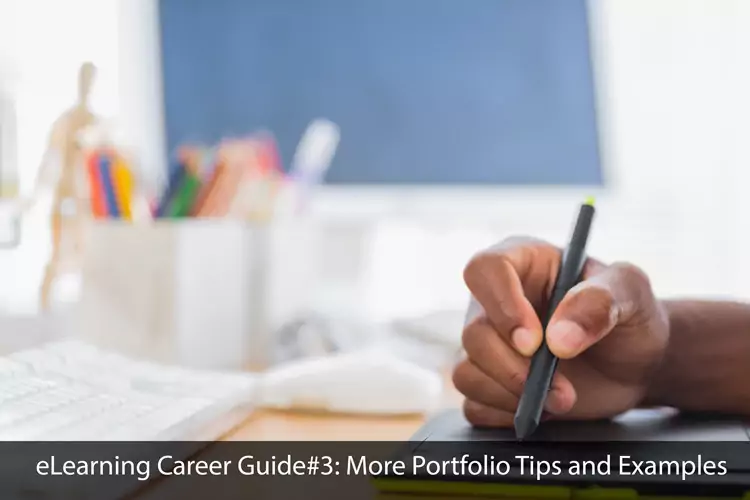eLearning Career Guide#3: More Portfolio Tips and Examples

In this current series of articles, I’m providing some guidance to those who want to launch or enhance their eLearning careers. In the last article, I highlighted the importance of developing your eLearning portfolio – an essential self-marketing piece that can really make or break your efforts. I’d like to continue to with portfolio development by walking you through three more examples of portfolios, all of which have their good points and their less good points.

Nancy Woinoski is the owner of Pinched Head, a privately owned eLearning company located in Toronto. The company’s portfolio page looks great at first glance, but a deeper look reveals a few issues. I like the rotating images of 12 different projects at the top of the page, but I just assumed that if I clicked on one, I would get a demo version. Instead, what you get is just a larger version of the screenshot. That would be fine if there were another way to get a bit more information about each project, or a demo. What that means is that in terms of actual projects for which you can see a demo, there are only two, and that is simply not enough for a portfolio. This is especially not good when the text at the top of the page highlights that their portfolio is extensive. Then why not showcase more projects? And there needs to be more information about each project, more along the lines of the Jackie Van Nice example I highlighted in the last article.
Dan Sweigert is an eLearning designer and developer whose portfolio page has some good points and some real issues as well. The landing page needs some real work. The animation of the bird is choppy and unexciting, and the rather low-quality sound that goes with it borders on cheesy. When you click on the “view samples of my work,” the next page has categories of projects and, unfortunately, another poor choice in sound to go with it. I do like the layout of this categories page, which allows the user some freedom to choose what kinds of projects to focus on. I also like his introductory texts to each sample, so he’s getting some things right. What’s interesting to note here is that many of his samples were work he did for Jackie Van Nice, who so far is my poster child for stellar portfolio presentations. I think Dan should take a few more cues from her style!
Joe Gray is an eLearning developer who has taken a very novel approach to his online portfolio and resumé by using a game-show format. I really wanted this to work, and I think it could with some pretty hefty changes. After being introduced to the three developers, I had a suspicion that they were all Joe, which is the case, but there was no easy way to navigate backwards through the presentation to select another developer to find out. Also, he should get someone with more voice-over experience to do the narration so that it comes out at a much higher quality. Joe’s narration is a bit on the mumbly side and mispronounces at least one word. Finally, when you get down to the actual work samples, there’s simply not enough information there about the projects. I’ve been very critical of this one, in part because I do think this kind of creativity is a great way to go, but you also have to pull it off with top-notch quality, which is what is lacking here.
I hope you’re getting sense of what works and what doesn’t, as well as what could work if you put enough care and attention into crafting a top-notch digital eLearning portfolio. I’m convinced that it’s the single most important piece of taking your eLearning career to the next level.